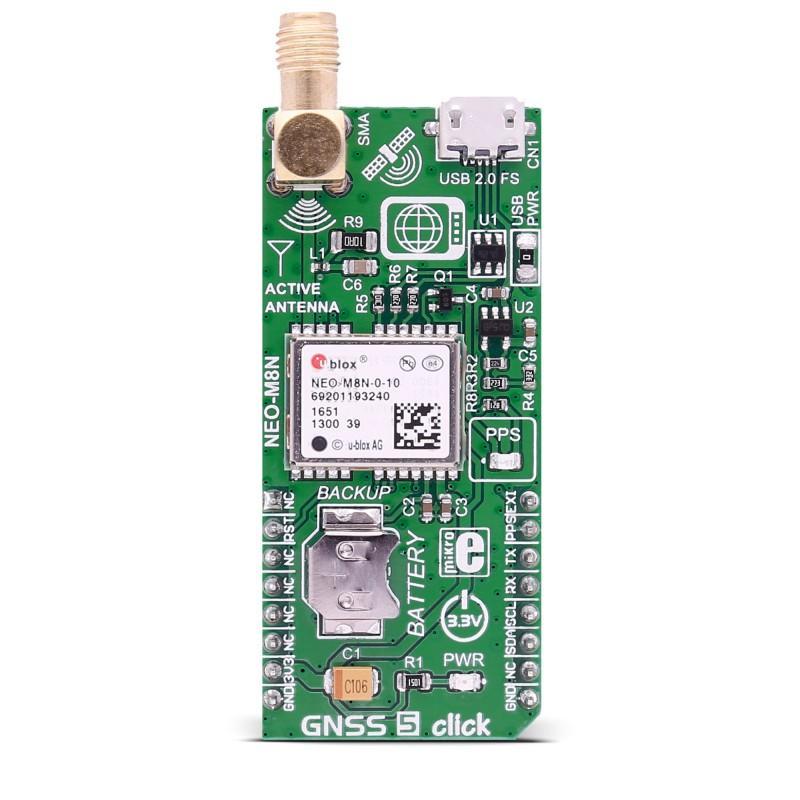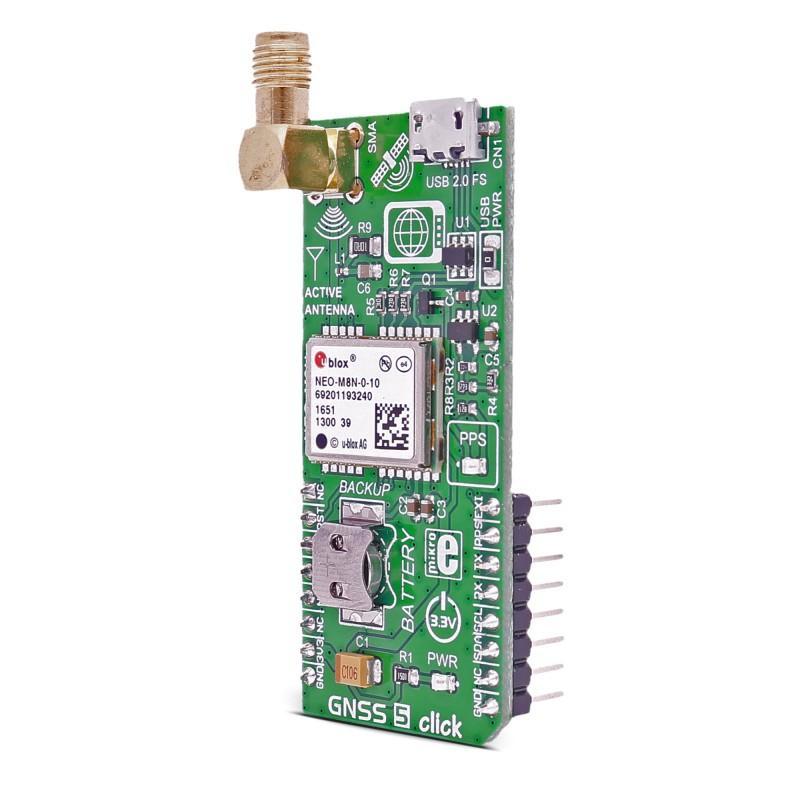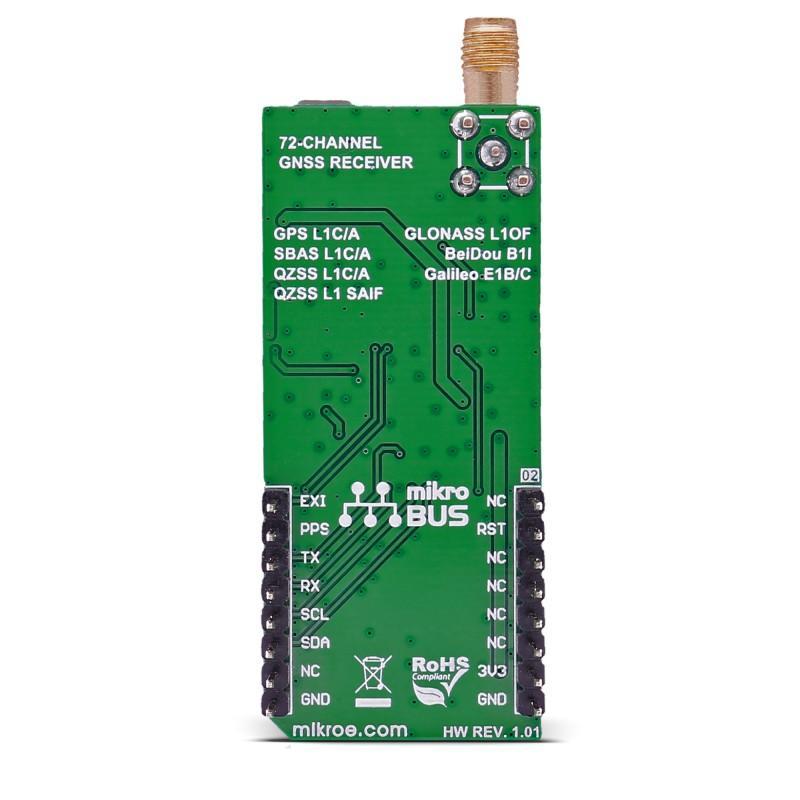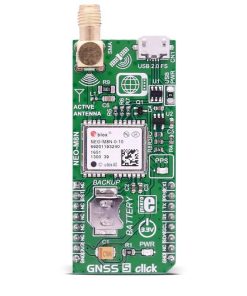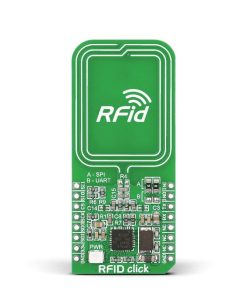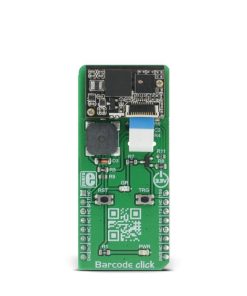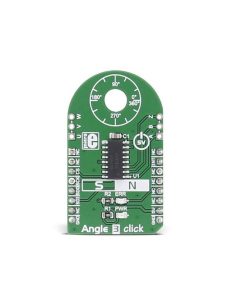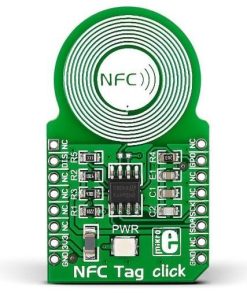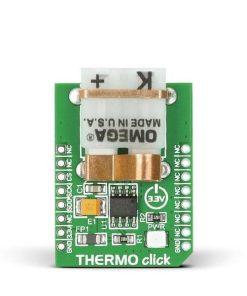GNSS 5 click – MikroElektronika u-blox NEO-M8N GNSS Module MikroElektronika
$ 69,00 $ 34,50
GNSS 5 click – MikroElektronika u-blox NEO-M8N GNSS Module

A USB interface (micro USB port), which is compatible with the USB version 2.0 FS (Full Speed, 12 Mbit/s), can be used for communication as an alternative to the UART.
The USB port can be used as a power supply as well if you need the click board™ to be a standalone device.
NEO-M8N GNSS receiver module features
The NEO-M8 series of concurrent GNSS modules are built on the high performing u-blox M8 GNSS engine in the industry proven NEO form factor.
The NEO-M8 series utilizes concurrent reception of up to three GNSS systems (GPS/Galileo together with BeiDou or GLONASS), recognizes multiple constellations simultaneously and provides outstanding positioning accuracy in scenarios where urban canyon or weak signals are involved.
The u-blox NEO-M8 modules can also benefit from the u-blox AssistNow assistance service. The Online service provides GNNS broadcast parameters, e.g. ephemeris, almanac plus time or rough position to reduce the receiver’s time to first fix significantly and improve acquisition sensitivity.
Hardware Backup Mode – If the main supply voltage fails, and a battery is connected to V_BCKP, parts of the receiver switch off, but the RTC still runs providing a timing reference for the receiver. This operating mode enables all relevant data to be saved in the backup RAM to allow a hot or warm start later.
What is GNSS?
GNSS stands for Global Navigation Satellite System, an umbrella term that describes both the United States GPS, the Russian GLONASS global positioning systems, and European Galileo.
How it works
A constellation of satellites sends a continuous signal towards Earth. Onboard every satellite is an atomic clock, and all of them are synchronized, thanks to a reference time scale defined by the whole system. So, that the signals coming from the different satellites of the same constellation share the same reference time scale.
If the user wants to utilize GNSS to determine a position, they must have an antenna that receives the signals coming from the satellites, and a receiver that translates these signals. The antenna position will be deduced from the measurements of the time delay between the emission time (satellite) and the reception time (receiver) for at least 4 signals coming from different satellites.
Specifications
| Type | GPS/GNSS |
| Applications | Asset tracking, for navigation devices based on GPS and GLONASS, road navigation devices, public transport, wearable devices, etc. |
| On-board modules | NEO-M8N GNSS receiver module from u-blox |
| Key Features | –167 dBm navigation sensitivity, supports all satellite augmentation systems, battery holder |
| Interface | I2C,UART |
| Input Voltage | 3.3V |
| Click board size | L (57.15 x 25.4 mm) |
Downloads
- mikroBUS™ Standard specification
- NEO-M8M datasheet
- GNSS 5 click schematic
- LibStock: GNSS 5 click library
Fast Shipping and Professional Packing
Through our long-term relationship in a long-standing partnership with UPS, FedEx, DHL and many other top global carriers we can provide a variety of shipping options. Our warehouse employees will pack every item to our exacting specifications. The goods you send us are checked thoroughly and secured properly prior to shipping. Everyday we deliver thousands of packages to customers across many countries. The fact that we're committed to becoming the biggest online retailer in the world is clear. Both Europe as well as the USA have warehouses and distribution centres.
Orders that contain more than one item are assigned processing times in accordance with the item.
We will inspect each and every one of the items ordered before shipping. Today, most orders will be shipped within 48 hours. The delivery time should be between 3-7 days.
Returns
The stock market is always changing. It's not entirely managed by us, since we have multiple organizations, such as the factory and our storage. Stock levels can fluctuate at any given time. Please understand it may happen that your order will be out of stock after the order is placed.
The policy is for 30 days. If you have passed 30 days in the past since you purchased, unfortunately we can't offer you a refund or exchange.
To be eligible for a refund, your item must be in good condition and in the same state that you received it. The item must be in the original packaging.
Related products
Click Sensors
3D Motion click – MikroElektronika 9-axis Sensor Fusion Motion Module MikroElektronika
Thermocouple
Thermo J click – MikroElektronika Type-J Probe Temperature Measurement MikroElektronika
Click Sensors
Click Sensors
Temp-Log 2 click – MikroElektronika Precise Ambient Temperature Measurement MikroElektronika
Tracking Device
Click Sensors
ECG 2 Click Bundle – MikroElektronika ECG Health and Fitness Tracking MikroElektronika
Tracking Device
GPS Sensor
Click Sensors
Thermostat Click – MikroElektronika MAX7502 IC Digital Temperature Sensor MikroElektronika
